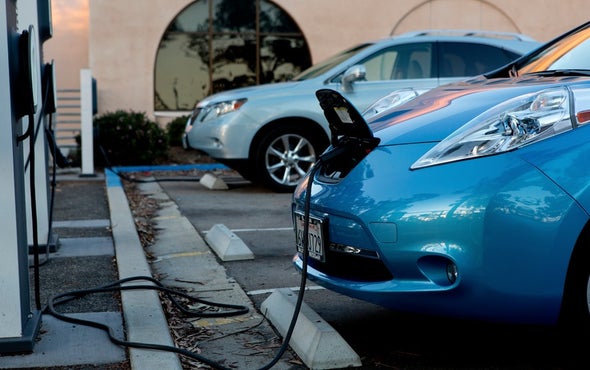
EPA is expected to take steps today toward killing California’s landmark program designed to get more clean cars on the road. The action might slow, but not stop, the global push toward electric vehicles, car experts said.
California’s zero-emissions vehicle mandate forces carmakers that sell in the state to offer a rising number of clean cars. Launched in 1990, it’s helped create an international market for electric vehicles and plug-in hybrids.
Battery prices have fallen, and European countries and China are demanding more ZEVs. General Motors Co. and Volvo Cars are among the automakers that say they plan to embrace electrification.
“The EV market is irreversible,” said Gil Tal, research director at the Plug-in Hybrid & Electric Vehicle Research Center with the University of California, Davis. “It’s not going to disappear. The growth can slow or be faster, but it will keep going.”
EPA appears ready to change the rules for the United States, a move that promises to trigger a battle with the nation’s most populous state. The agency along with the National Highway Traffic Safety Administration (NHTSA) is expected to seek comments on a proposed rollback of Obama-era vehicle mileage and emissions standards.
EPA is also expected to target California’s ability to set its own emissions standards. An Obama-era waiver under the Clean Air Act gives California that authority. The ZEV program was a part of that 2012 waiver, though it also was permitted federally years earlier. Twelve states and the District of Columbia have adopted California’s emissions standards.
California’s ZEV program is intended to push car companies into making electric and other clean cars. It mandates more ZEVs to be built in the years ahead. If it works as intended, it would shrink greenhouse gases the equivalent of taking 2.8 million cars off the road by 2030, and 8.4 million by 2050.
Home to nearly 40 million people, California has promised legal action if EPA blocks its authority to run its state programs. The Golden State already sued EPA in May over its initial move to undo Obama-era tailpipe standards. Sixteen other states and the District of Columbia joined that suit, which didn’t speak to California’s authority under the Clean Air Act.
“It’s just going to be a battle royal in the courts,” said Ethan Elkind, climate research fellow at the University of California, Berkeley, School of Law.
A draft of the proposed EPA rule published in The New York Times argues that the California ZEV program hurts consumers nationwide.
The regulatory mandate “has required automakers to spend tens of billions of dollars to develop products that consumers have not adopted, and consequently to sell such products at a loss,” the draft said. “All of this is paid for through cross subsidization by increasing prices of other vehicles not just in California and other States that have adopted California’s ZEV mandate, but throughout the country.
“A consumer buying a pickup truck in Texas or Kentucky should not be on the hook to pay for the heavily subsidized lease of an electric vehicle by a wealthy Californian,” it added.
The Alliance of Automobile Manufacturers and the Association of Global Automakers, trade groups for car companies, have said they wanted one rule for the federal government and all states. They’ve also said meeting current standards will be hard because consumers prefer trucks and SUVs over ZEVs and other efficient cars. They reached out to the Trump administration for help.
Wade Newton, spokesman for the Alliance of Automobile Manufacturers, which represents companies like BMW Group, Ford Motor Co., GM and Toyota Motor Corp., noted that EPA’s proposal is “the start of discussions.”
In terms of ZEVs, Newton said that automakers are offering consumers “more than 50 models of electric vehicles, so it’s clear we’ve invested heavily in these technologies. We have a big stake in selling them in large numbers, and the last thing we want to see is a zero-emission vehicle sitting unsold on a dealer’s lot.”
Automakers earlier this year joined with several states to increase their sale of EVs, he said. However, last year, “ZEVs represented just 1.16 percent of total sales in the states that have adopted California’s ZEV regulations, or about 31,000 vehicles out of 2.7 million new vehicles sold.”


1 Comments
thanks
ReplyDelete